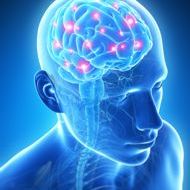Behavioral Experiments
In Cognitive Behavioral Therapy, behavioral experiments are designed to test thoughts. […] This would give you objective feedback about whether self-criticism or self-kindness was more effective […]
(CBT Behavioral experiment example)
Thought Records
Like behavioral experiments, thought records are also designed to test the validity of thoughts. […] Once you’ve looked at the objective evidence for and against a thought side by side, the idea is to come up with several more balanced thoughts. […]
Thought records tend to help change beliefs on a logical level, whereas behavioral experiments may be more helpful in also changing beliefs on a gut or felt level i.e., what you emotionally feel is true, regardless of the objective evidence. (CBT Thought record example)
Pleasant Activity Scheduling
Pleasant activity scheduling is a surprisingly effective Cognitive Behavioral Therapy technique. It’s particularly helpful for depression. […]
Doing activities that produce higher levels of positive emotions in your daily life will help make your thinking less negative, narrow, rigid, and self-focused.
Situation Exposure Hierarchies
Situation exposure hierarchies involve putting things you would normally avoid on a list. […] For each item on your list, rate how distressed you think you’d be if you did it. […]
Try to have several items at each distress number so there are no big jumps. The idea is to work your way through the list from lowest to highest. You would likely experiment with each item several times over a period of a few days until the distress you feel about being in that situation is about half of what it was the first time you tried it […] Then move to the next item up the list.
Imagery Based Exposure
One version of imagery exposure involves bringing to mind a recent memory that provoked strong negative emotions. […] In imagery exposure, the person would bring the situation of being given the feedback to mind and remember it in lots of sensory detail […] They would also attempt to accurately label the emotions and thoughts they experienced during the interaction, and what their behavioral urges were […]
Imagery based exposure can help counteract rumination because it helps make intrusive painful memories less likely to trigger rumination. Because of this, it also tends to help reduce avoidance coping. When a person is less distressed by intrusive memories they’re able to choose healthier coping actions.
Summary
This list of Cognitive Behavioral Therapy techniques is far from exhaustive but will give you a good idea of the variety of techniques that are used in Cognitive Behavioral Therapy. If you’re working with a therapist and you’ve been doing your own reading about CBT, you can let your therapist know what techniques you’re excited to try.





